India Projected to Become World's Most Populous Country Next Year
Written by Hannah Evans, Senior Analyst | Published: September 19, 2022
How one organization, Population Foundation India, is reacting to the news and working toward a healthier, more equitable future for all Indians
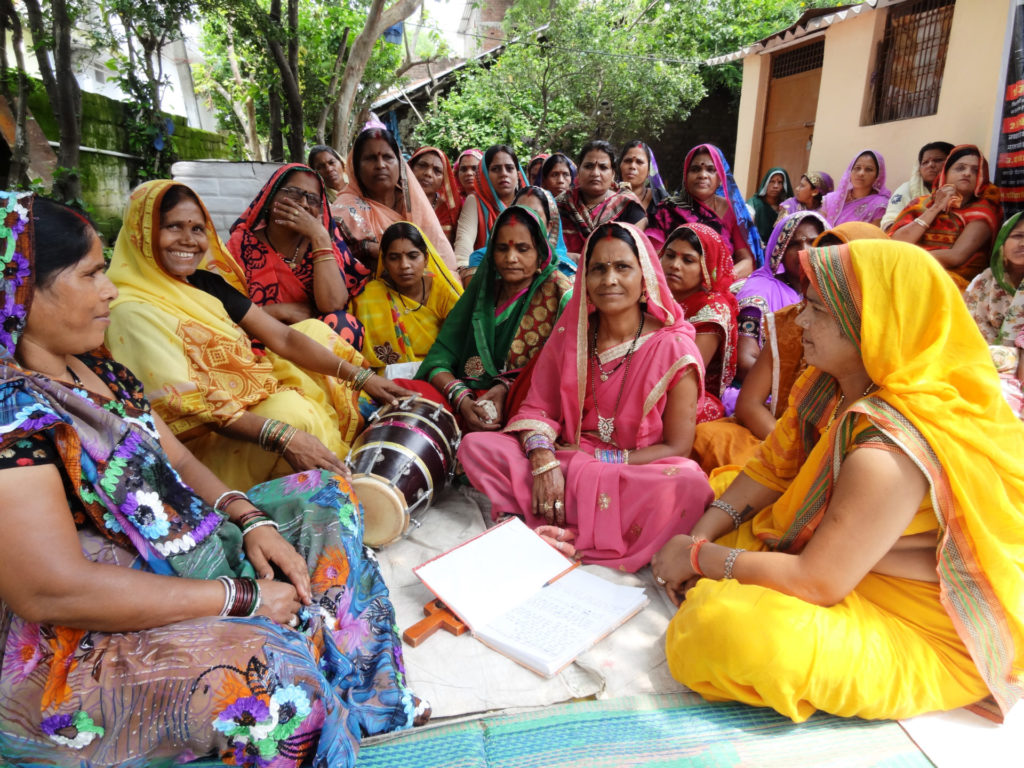
On November 15, the world is projected to reach the astounding population milestone of 8 billion, according to the 2022 revision of the United Nations Population Division’s World Population Prospects.
Another major conclusion from the report is that India is set to surpass China as the world’s most populous country in 2023. India is currently home to more than 1.4 billion people, and its population isn’t expected to peak for another 40 years—topping out at 1.7 billion in the early 2060s—while China’s population is expected to start shrinking next year.
Fertility and population growth rates have declined substantially in most Indian states in recent decades, and in 2021, the country achieved below-replacement-level fertility for the first time. These impressive gains are thanks to poverty alleviation, urbanization, and better, more widespread access to health care and education—especially for girls. Yet, India’s large share of young people will continue to drive population growth for several generations, putting additional pressure on the region’s natural resources and on the government’s ability to meet the public health and other infrastructure needs of its people. And because fertility rates remain highest in the lowest-income settings, population growth rates in India’s poorest states are disproportionately higher than those of affluent states and of the national average.
Population and Environment
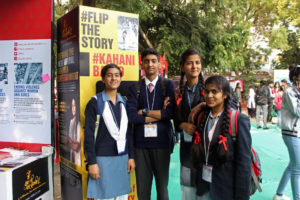
India, along with most other industrializing nations, is in a precarious catch-22 position wherein the development required to improve living standards results in the overuse of available resources and higher levels of climate-changing greenhouse gas emissions—which most egregiously affect people living in those same industrializing countries. Unless changes are made to the way food and energy are produced, India’s development will continue to contribute to the environmental dangers Indian people face, such as air and water pollution, land degradation, depletion of freshwater resources, and mounting disasters due to climate change. All of India’s 1.4 billion inhabitants already live in areas where air quality is below World Health Organization (WHO) standards, and the number of heavily polluted cities is increasing. In 2022, India reported a total of 132 cities with pollution levels higher than the national standard, up from 102 in 2019. Over the past few years alone, extreme flooding and heatwaves have ravaged the country and affected tens of millions of people. The state of Kerala’s record-breaking floods in 2018 and 2019, for example, were prompted by a combination of warmer temperatures causing stronger monsoons and by landslides due to mining and construction. The floods caused 483 deaths and affected over 5.4 million people. Kerala’s new airport—which was built on a floodplain—was temporarily shut down as a result.
Population and Sexual and Reproductive Health and Rights (SRHR)
During the 1960s and 70s, alarm over warnings that population growth would outrun food supply resulted in the implementation of various state-sanctioned population control policies, which materialized most notoriously in China and India. Between 1976 and 1977, India forcibly sterilized millions of people, mostly poor men. The campaign ranged in severity from incentives such as transistor radios to the horrors of physically dragging people to sterilization camps.
Widespread opposition to these brutal human rights abuses eventually led to a shift away from government-led population control and towards the promotion of reproductive health and rights, especially following the 1994 UN International Conference on Population and Development in Cairo. However, the legacy of target-driven, sterilization-based family planning was never fully abandoned. A 2012 Human Rights Watch study found that some Indian state governments were still applying quotas for contraceptive use, including female sterilization, and population control policies disqualifying families with more than two children from obtaining government jobs or from receiving benefits from various government schemes is currently in effect in a few states.
Development as a Contraceptive
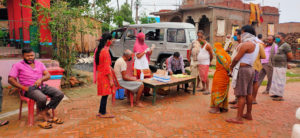
The best and most effective longterm way to reduce fertility and slow population growth is by expanding access to health care, education, and economic opportunity; investing in girls’ education; and ensuring family planning information and services are available to all who desire and need them. Currently, India’s total fertility rate (TFR) is 2.0 births per woman, with most states having reached replacement rate (2.1) or below, and the demand for and use of modern contraception is only continuing to increase.
Throughout India, wanted fertility rates, ideal family size, and total fertility rates vary according to people’s education and income levels. According to the most recent National Family Health Survey statistics for 2019-2021, the total wanted fertility rate (the TFR that would result if all unwanted births were prevented) is 1.6. The gap between actual and wanted fertility is higher among women with no schooling (2.8 vs. 2.2) than it is among women with 12 or more years of schooling (1.8 vs. 1.6). According to the same survey, ideal family size* also declines with rising levels of education—women with 12 or more years of schooling report an ideal family size of 1.8 children, while the ideal number of children reported by women with no schooling is 2.5 (the national average is 2.1).
Only five Indian states still have fertility rates above replacement level, including four of the poorest. India has taken action to improve people’s sexual and reproductive health by expanding the contraceptive method mix offered under the National Family Planning Program, securing a more stable supply of family planning commodities and SRHR services, and introducing an initiative focused on improving the health of adolescents. Still, rates of unmet need for modern contraception and unintended pregnancies remain high—around 49 million Indian women have an unmet need for contraception, and 45 percent of pregnancies are unintended each year.
Population Foundation India
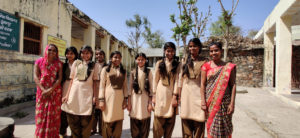
One organization stands out as an agent for positive change: Population Foundation India (PFI) works to address India’s population, health, and development issues through gender-sensitive and rights-based initiatives in sexual and reproductive health and women’s empowerment. Founded in 1970, PFI is a leader in policy work, community-led development, and initiatives focused on social and behavioral change. For over 50 years, PFI has produced research, advocated for progressive SRHR policies, and supported the government in improving health outcomes for millions of people across the country through its national and state-specific programs. PFI works with India’s state and national governments and with other NGOs on the provision of family planning services, adolescent reproductive and sexual health, community action for health, the scaling up of successful pilot programs, and social and behavioral change communication.
PFI works throughout India from its headquarters in New Delhi and has a direct presence in Rajasthan, Bihar, and Uttar Pradesh—three low-income states in the northern part of the country. More recently, PFI’s direct presence has expanded to the states of Manipur and Jharkhand. “We look at populations that are underserved, and how do we really make a dent there where the challenges are the most. What kind of strategies, what kind of local capacities do we have,” says Bijit Roy, Senior Lead of Programs.
Both Bihar and Uttar Pradesh rank in the top three of India’s 28 states for poverty and fertility, with fertility rates of 3.0 and 2.35 children per woman, respectively. In Bihar, India’s poorest state, around 34 percent of the population was living below the international poverty line of $1.90 in 2012 (the most recent state-level data). Uttar Pradesh, India’s most populous state, had a poverty rate of 29 percent in 2012. In Rajasthan, the fertility rate is a bit lower, at 2.0, and the poverty rate (in 2012) was lower as well, at 15 percent.
PFI’s Rights-Based Approach
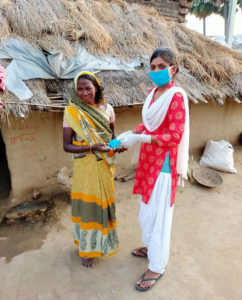
“The essence of our work focuses on advancing gender-sensitive policy, ensuring adequate implementation of reproductive health programs, and promoting community accountability,” explains Sanghamitra Singh, PhD, Lead of Policy and Programs at PFI.
PFI’s work with Indian policymakers, influencers, and media representatives includes helping them recognize violence against women and girls as a public health concern. Another major initiative is teen pregnancy prevention—PFI, along with over 200 thought leaders and influencers, supported a campaign by the Government of Rajasthan aimed at reducing the country’s highest rates of adolescent pregnancy. And in Uttar Pradesh, PFI established sexual health youth centers at 40 colleges.
PFI produces critical analyses of policies and programs related to population and family planning—through publications and media engagement, PFI confronts coercive population control proposals with evidence-based alternatives grounded in human rights. Government incentives to discourage couples from having more than two children—including conditional access to government jobs, subsidies, and promotions—explicitly target low-income, marginalized populations.
State-led initiatives aimed at population control run contrary to the government’s stated commitment to slowing population growth through rights-based development and the expansion of education, women’s empowerment, and gender equality. Bijit Roy explains, “We have done a lot with the media and political leadership across party platforms … a lot with the chief secretaries who work along with the chief ministers … giving them credible evidence and facts about how negative the implications of coercive policies can be. We are also beginning work on sensitizing the negative aspects of coercion on family planning and population issues. So it’s a very uphill task that one organization can take on.” Despite PFI’s impressive efforts, since the 1990s, 12 Indian states have introduced two-child policies, and in 2021 alone, two-child proposals were introduced in the states of Uttar Pradesh and Assam.
Bringing the Public Into Public Health
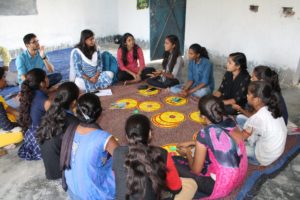
other on issues related to health and well-being
PFI’s Community Action for Health (CAH) approach empowers community members and community-based health committees to ensure the adequacy and accountability of local health care systems. For example, CAH’s Strengthening Reproductive Health and Family Planning Services initiative brings state and district health officials into rural, hard-to-reach communities throughout the Darbhanga and Nawada districts of Bihar to increase awareness and use of family planning methods.
The program also uses PFI’s interactive voice system, an automated, responsive telephone line that allows patients to give confidential feedback on the quality and availability of services they’ve received. The voice system is used by local and state officials to resolve issues and grievances that might otherwise not have been reported, which has led to more stable supplies of family planning commodities and antenatal care services, especially in remote project sites.
Social and Behavioral Change Communication
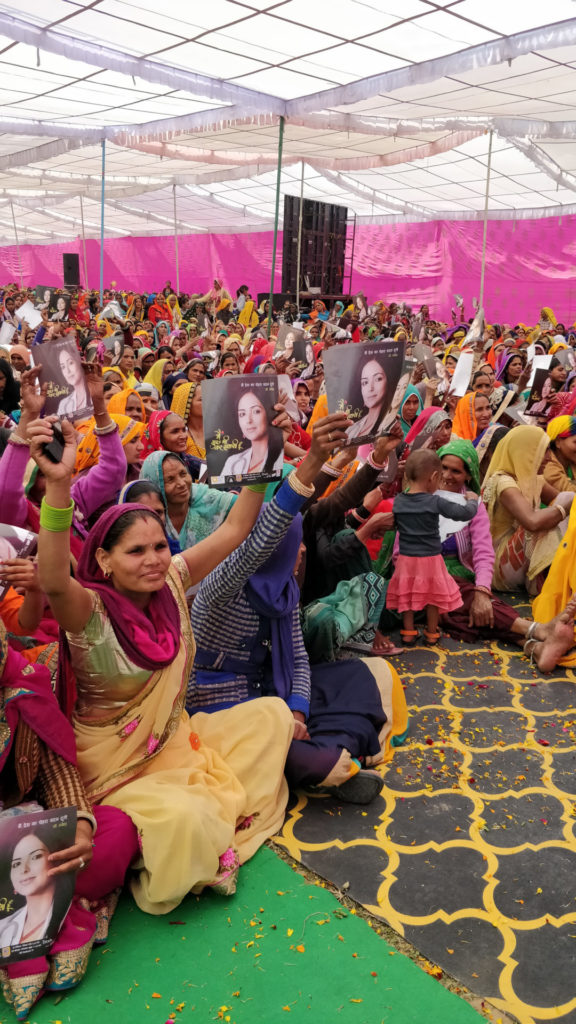
All PFI programs aim to dismantle harmful social norms and biases influencing people’s understanding of and willingness to use reproductive health services. Sanghamitra Singh says, “Another big umbrella that is a cross-cutting avenue of our work is to understand and address the various factors outside of the health system that have an impact on health outcomes for women and for young people and other vulnerable populations, also called social determinants of health,” adding, “These could be social norms, societal factors, patriarchy, and women’s status in society.”
PFI uses entertainment education to positively influence behavior change via television and radio, digital and social media, and community-based outreach. PFI’s flagship initiative, Main Kuch Bhi Kar Sakti Hoon (MKBKSH), translated as, “I, a Woman, Can Achieve Anything,” is a widely popular television and radio drama series that ran for 183 episodes over three seasons and has been translated into 14 languages and broadcasted across 200 community radio stations as well as social media channels. The empowering series depicts a young woman who becomes a medical doctor and returns to her village to help improve the health and rights of women. The series tactfully explores sensitive topics like family planning, early marriage, gender equality, contraceptive use, and domestic violence in ways that entertain while subtly and sensitively challenging unjust social and cultural norms. “It’s a 360-degree approach,” says Sanghamitra Singh.
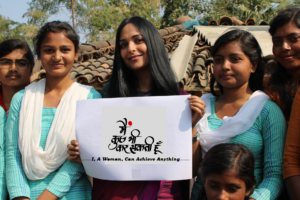
“We also created an artificially intelligent chat bot (SnehAI Chat Bot), which uses the on-screen persona of the lead character, Dr. Sneha, to ask questions about sexual and reproductive health and create a comfortable environment for questions.” SnehAI uses a “colloquial mix of Hindi and English” and operates on Facebook Messenger to engage youth with videos, quizzes, and stories intended for first generation digital media users.
Since its inception in 2013, MKBKSH has reached hundreds of millions of viewers, receiving celebrity endorsements from Bollywood stars like Sharmila Tagore and Farhan Akhtar.
Conclusion
India currently has a favorable age structure for experiencing a “demographic dividend,” with a growing proportion of working-age adults relative to a shrinking proportion of younger dependents. This could set India up for rapid economic growth and improvements in living standards for many of the country’s poorest people. The extent of the improvements, however, will depend on India’s commitment to gender equality and the equitable provision of rights-based social programs, including access to high quality family planning education and services. Fortunately, there’s at least one organization working every day to turn India’s best case scenario into reality.
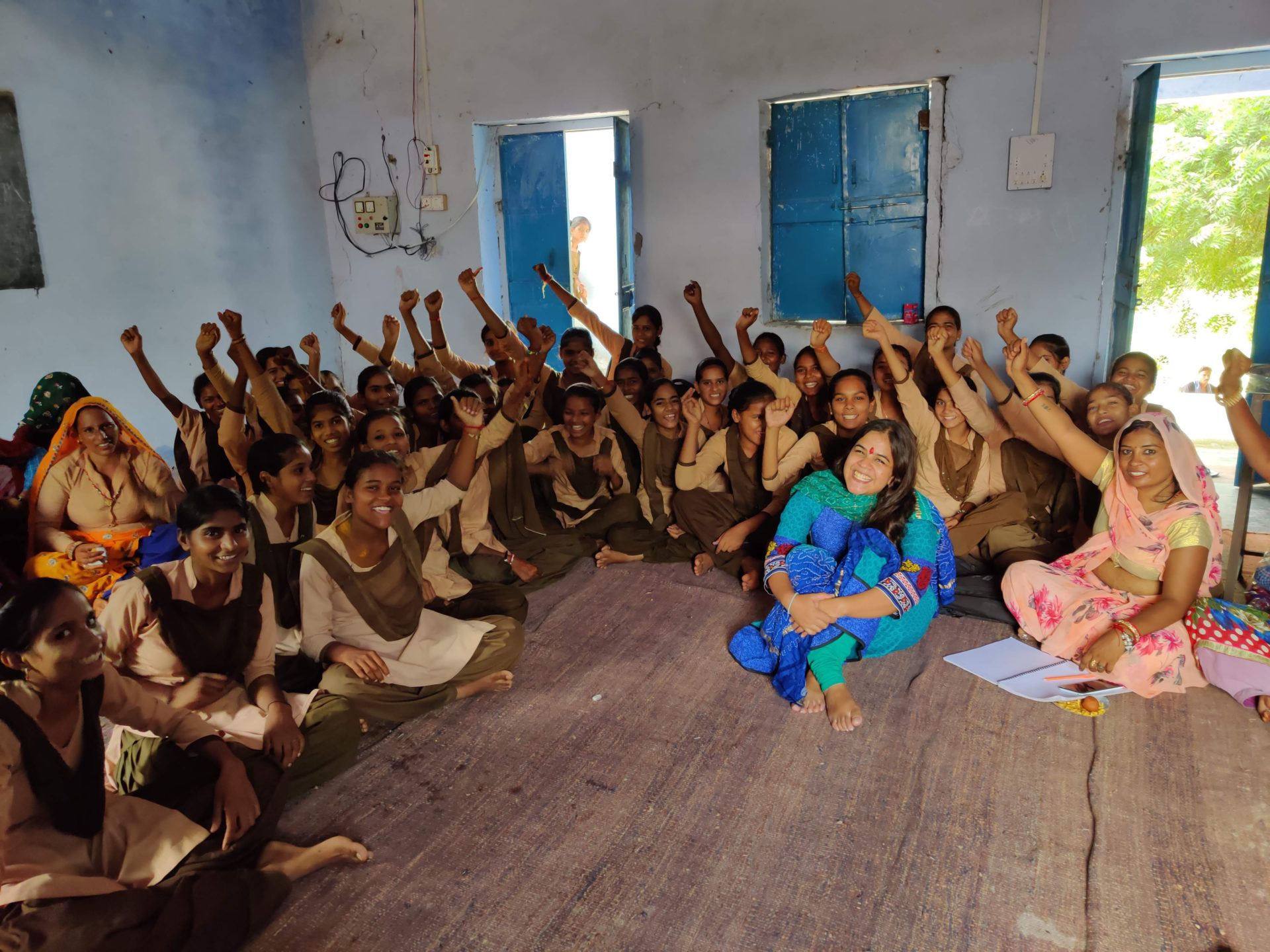
Statement by Population Foundation India (PFI) on India Becoming the Most Populous Country in 2023
The UN’s earlier forecasts and the new figures don’t differ significantly. According to the previous World Population Prospects study, India was slated to surpass China in population by 2027. Therefore, we were aware that India will surpass China in a short period of time.
However, we must have a much broader perspective when looking at the demographic story. India’s annual population growth rate was 2.3 percent in 1972, but it is currently less than 1 percent. Over this time, the average number of children an Indian woman has in her lifetime has decreased from around 5.4 to under 2.0. The replacement fertility rate, at which a population precisely replaces itself from one generation to the next, has thus been reached. According to the most recent National Family Health Survey statistics, modern contraception use is increasing across the nation, and the desired fertility rate for all communities in India is less than 2.
India should now think about its people rather than just numbers. The unmet need for contraception among Indian women is 9.4 percent, which translates to 22 million women who desire to put off or delay having children but lack access to a method of contraception.*
Giving women from all backgrounds access to family planning services should be our first priority. We should also take advantage of the fact that a third of our population is under the age of 24. To fully utilize the so-called “demographic dividend,” the government must take a leading role in investing in young people’s economic opportunity, health, and education.
* These figures do not include women who are using traditional methods of family planning, which is why these numbers differ from the ones that appear earlier in the article—those figures, from the Guttmacher Institute, consider women who are using traditional methods to have an unmet need for contraception.
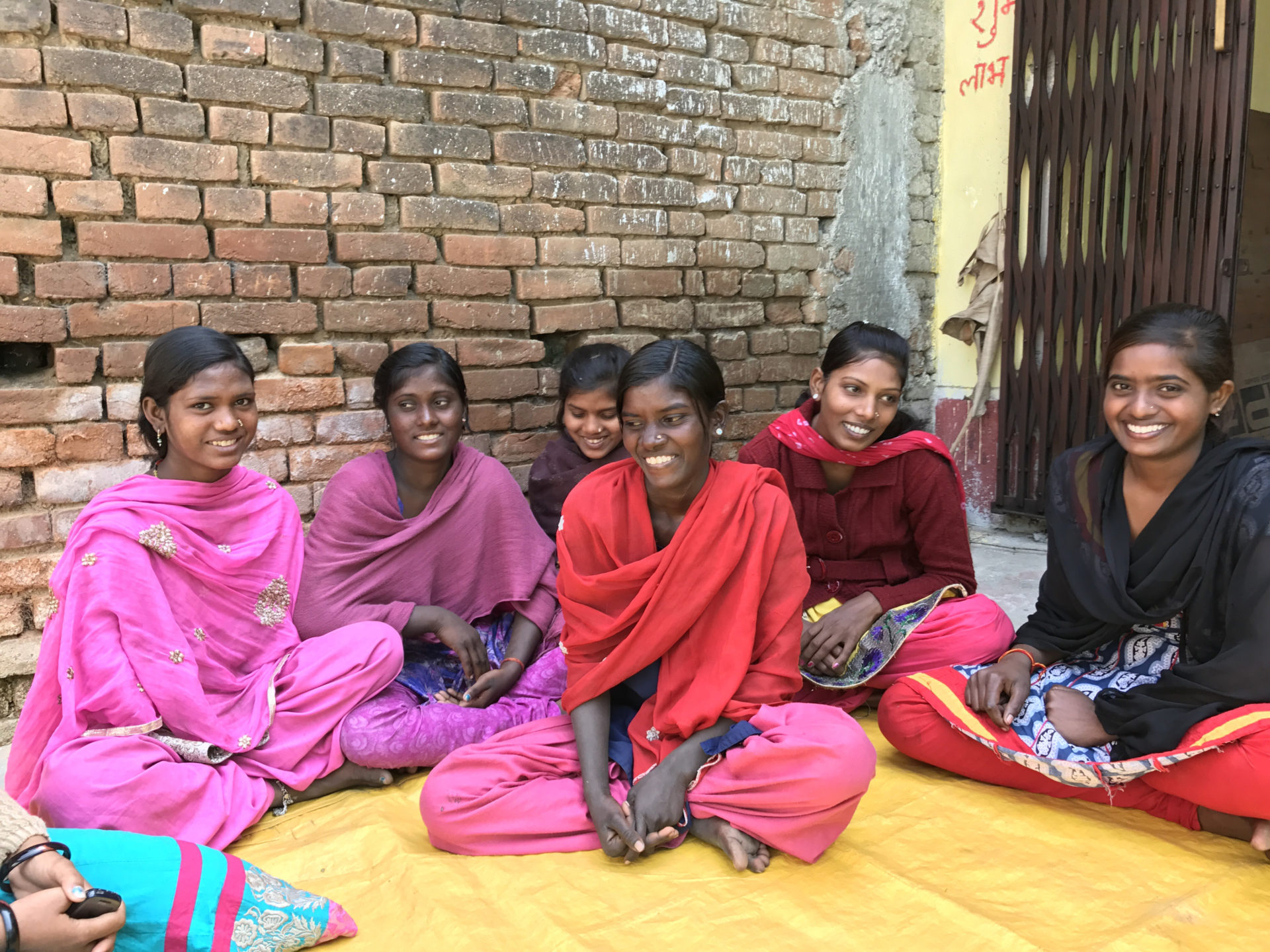
* Edits made on November 6, 2022:
- The original version of this article identified more rapid glacial melt in the Himalayas as one reason for Kerala’s floods, but Kerala does not receive runoff from the Himalayas. The state is in the country’s southwest, and its rivers come from the Western Ghats, which are not glaciated.
- The paragraph about wanted fertility and ideal family size has been edited to better represent what each term means. Here are the full definitions of each, as used in the National Family Health Survey:
- Wanted fertility rate: The average number of children a woman would have by the end of her childbearing years if she bore children at the current age-specific fertility rates, excluding unwanted births.
- Ideal family size: Respondents with no children were asked, “If you could choose exactly the number of children to have in your whole life, how many would that be?” Respondents who had children were asked: “If you could go back to the time when you did not have any children and could choose exactly the number of children to have in your whole life, how many would that be?”
Note that the total wanted fertility rate (1.6) is lower than ideal family size (2.1) at the country level—this is not a data error in the paragraph above. The number of wanted births people have is often below the number they report as ideal.

